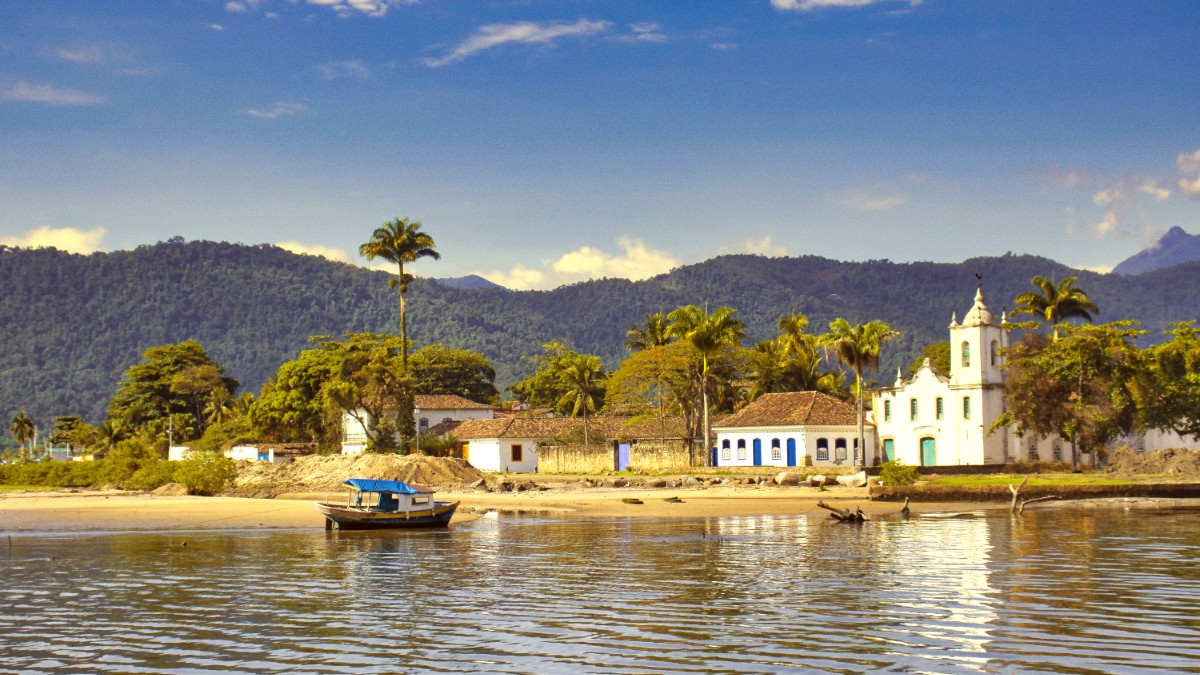
The Southeast, Brazil
From its UNESCO-listed historic district, a living museum, to its pristine beaches and lush Atlantic Forest waterfalls, Paraty offers an experience like no other. Discover an adventure where every turn presents a new wonder, a new story, and a new reason to pause. Your journey into the heart of Brazil’s colonial past and natural splendor begins here.
Paraty's history is rich, deeply intertwined with Brazil’s colonial past. Established in 1667, it quickly became a significant port for the Portuguese Crown. During the 18th century, Paraty served as the main outflow point for gold and precious stones discovered in Minas Gerais.
This gold traveled along the Caminho do Ouro, or Gold Trail, an ancient paved route connecting the mines to the coast. This trade brought prosperity, transforming Paraty into a wealthy and politically noteworthy town. Its strategic location also made it a hub for cachaça production, Brazil’s national spirit, a tradition continuing today.
As the gold trade shifted to Rio de Janeiro, Paraty’s prominence diminished, preserving its colonial core from modern development. This period of isolation paradoxically kept its unique architectural heritage. In the mid-20th century, a new road connecting Rio and Santos revitalized Paraty, opening it up for visitors.
Today, its historic district holds UNESCO World Heritage status, recognized for its exceptional universal value. This designation underscores its well-preserved colonial urban plan and the harmonious blend of its cultural and natural landscapes. Paraty is a living museum, where visitors walk through centuries of history, feel the echoes of a prosperous past, and observe a significant chapter in Brazil’s formation. The historical background extends beyond its buildings, encompassing local traditions, cuisine, and the spirit of the place.
Southeastern Brazil, Costa Verde, Rio de Janeiro state.
UNESCO site with preserved 18th-century colonial architecture.
Atlantic Forest, waterfalls, 65 islands, pristine beaches.
Boat trips, jeep tours, hiking, art, local cuisine.
No airport; reach by bus/shuttle from Rio/São Paulo (4-6 hours).
The town maintains strong traditions in artisan crafts and local gastronomy. Taste dishes like Moqueca and Peixe com Banana.
Relaxed, charming, and welcoming. Paraty is a peaceful escape with chances for both adventure and unwinding.
This snapshot paints a picture of a destination balancing historical depth with natural splendor, a memorable trip for those seeking an authentic Brazilian experience beyond the typical tourist paths.
Paraty offers an unique blend of culture, history, and nature, a destination to cherish.
Paraty has a tropical climate, consistently warm temperatures and humidity throughout the year. Distinct wet and dry seasons influence the travel experience.
Each season presents different advantages and disadvantages for travelers. Your chosen activities factor into the timing of your visit.
Tropical climate with warm temperatures and humidity year-round. Distinct wet and dry seasons exist.
Summer (Dec-Mar) is hot and wet. Winter (Jun-Aug) is drier and cooler. Shoulder seasons offer balanced weather.
Historic district floods during high tides (Nov-Mar), creating unique visual effects but requiring walking with wet feet.
The time of year for your visit can shape your Paraty experience.
Passport valid for at least six months beyond your departure date, with two blank pages.
Proof of onward or return travel (flight or bus ticket).
Evidence of sufficient funds for your stay (bank statements, credit cards, cash).
Brazilian Real (BRL). Exchange currency at authorized exchange houses or banks. ATMs are widely available and accept most international cards. Visa and Mastercard are accepted in many places.
Budget traveler: R$ 150-300. Mid-range: R$ 300-700. Luxury: R$ 700+. (Excludes international flights, covers accommodation, food, local transport, activities).
Restaurants often add a 10% service charge. No extra tip needed if present. For good service, 10% is customary if not included. Tipping not mandatory for taxis; rounding up is fine.